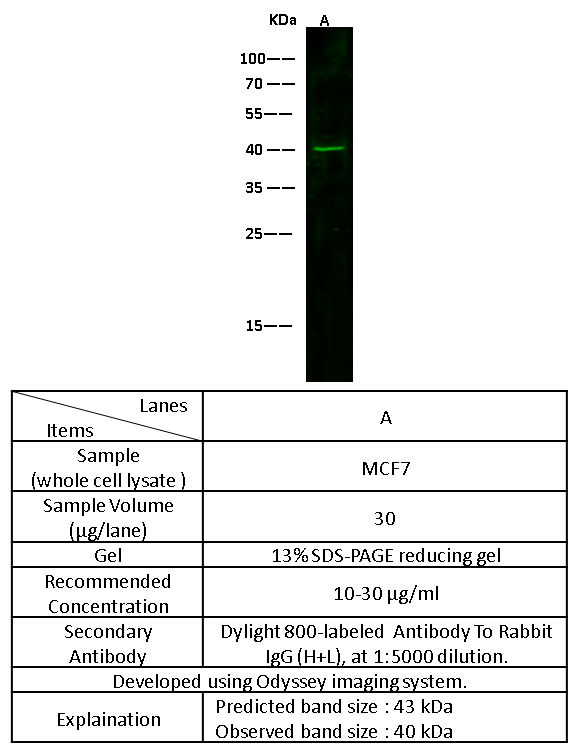-
Product Name
Anti-RAGE / AGER antibody
- Documents
-
Description
Rabbit polyclonal to RAGE / AGER
-
Tested applications
ELISA, WB
-
Species reactivity
Mouse AGER / RAGE
-
Alternative names
AGER antibody; Ager antibody; MGC22357 antibody; RAGE antibody; RAGE antibody; DAMA-358M23.4 antibody; RAGE antibody; RAGE antibody
- Immunogen
-
Isotype
Rabbit IgG
-
Preparation
Produced in rabbits immunized with purified, recombinant Mouse AGER (rM AGER; NP_031451.2; Met 1-Ala 342). AGER specific IgG was purified by mouse AGER affinity chromatography
-
Clonality
Polyclonal
-
Formulation
0.2 μm filtered solution in PBS with 5% trehalose
-
Storage instructions
This antibody can be stored at 2℃-8℃ for one month without detectable loss of activity. Antibody products are stable for twelve months from date of receipt when stored at -20℃ to -80℃. Preservative-Free.
Sodium azide is recommended to avoid contamination (final concentration 0.05%-0.1%). It is toxic to cells and should be disposed of properly. Avoid repeated freeze-thaw cycles. -
Applications
WB: 10-30 μg/mL
ELISA: 0.1-0.2 μg/mL
This antibody can be used at 0.1-0.2 μg/mL with the appropriate secondary reagents to detect Mouse AGER. The detection limit for Mouse AGER is approximately 0.00245 ng/well.
-
Validations

AGER / RAGE Antibody, Rabbit PAb, Antigen Affinity Purified, Western blot
-
Background
Receptor for Advanced Glycosylation End Products (RAGE, or AGER) is a member of the immunoglobulin super-family transmembrane proteins, as a signal transduction receptor which binds advanced glycation endproducts, certain members of the S100/calgranulin family of proteins, high mobility group box 1 (HMGB1), advanced oxidation protein products, and amyloid (beta-sheet fibrils). Initial studies investigating the role of RAGE in renal dysfunction focused on diabetes, neurodegenerative disorders, and inflammatory responses. However, RAGE also has roles in the pathogenesis of renal disorders that are not associated with diabetes, such as obesity-related glomerulopathy, doxorubicin-induced nephropathy, hypertensive nephropathy, lupus nephritis, renal amyloidosis, and ischemic renal injuries. RAGE represents an important factor in innate immunity against pathogens, but it also interacts with endogenous ligands, resulting in chronic inflammation. RAGE signaling has been implicated in multiple human illnesses, including atherosclerosis, arthritis, Alzheimer's disease, atherosclerosis and aging associated diseases.
-
References
- Zhou Z, et al. (2011) RAGE and its ligands in bone metabolism. Front Biosci (Schol Ed). 3: 768-76.
- Mosquera JA. (2010) Role of the receptor for advanced glycation end products (RAGE) in inflammation]. Invest Clin. 51(2): 257-68.
- D'Agati V, et al. (2010) RAGE and the pathogenesis of chronic kidney disease. Nat Rev Nephrol. 6(6): 352-60.
Related Products / Services
Please note: All products are "FOR RESEARCH USE ONLY AND ARE NOT INTENDED FOR DIAGNOSTIC OR THERAPEUTIC USE"
